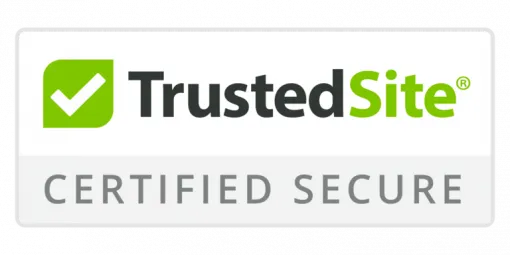Starting a business strategy consulting side hustle for startups involves leveraging your existing expertise to offer targeted advice and solutions to fledgling companies. This side hustle can be both fulfilling and financially rewarding if approached correctly. Here's a step-by-step guide on how to get started:
1. Identify Your Niche
Begin by pinpointing a specific niche within the startup ecosystem that aligns with your expertise and interests. This could be anything from tech startups to social enterprises.
Specializing allows you to tailor your services more effectively and stand out in a crowded market.
2. Set Up Your Consulting Business
Professionalism is key. Start by registering your business and creating a legal structure, such as an LLC or sole proprietorship.
Obtain any necessary licenses or permits, and consider getting insurance to protect yourself and your clients.
3. Build Your Brand
Create a strong brand identity that reflects your niche and expertise. This includes developing a professional website, designing a logo, and crafting a compelling value proposition.
Your online presence should clearly communicate how your services can help startups succeed.
4. Develop Your Service Offerings
Outline the specific services you will offer, such as market analysis, business plan development, financial forecasting, or growth strategy.
Define your pricing structure and consider offering packages that cater to different stages of a startup's lifecycle.
5. Network and Market Yourself
Start networking within the startup community. Attend industry events, join online forums, and participate in social media groups where startup founders congregate.
Offer free workshops or webinars to showcase your expertise and attract potential clients.
6. Find Your First Clients
Leverage your existing network to find your initial clients. Reach out to former colleagues, friends, or industry contacts who may know startup founders in need of your services.
Consider offering discounted rates or pro bono work to build your portfolio and gain testimonials.
7. Deliver Exceptional Value
Your success will depend on the value you provide to your clients. Ensure you deliver actionable insights and measurable results.
This will lead to positive word-of-mouth referrals and repeat business.
8. Continuously Improve
Stay updated with the latest trends and developments in the startup ecosystem.
Continuously refine your skills and expand your knowledge to provide the most relevant and effective advice.
By following these steps, you can create a sustainable and rewarding side hustle in business strategy consulting for startups.
With the right approach, your part-time business can grow into a significant source of income and professional fulfillment.
Identifying Your Consulting Niche
Identifying Your Consulting Niche
Your side hustle in business strategy consulting should focus on a specific niche where your skills, experience, and market demand intersect. Pinpointing this niche is crucial for differentiating your services and attracting high-value clients, even on a part-time basis.
To identify your niche, engage in thorough exploration, considering factors such as industry expertise, business functions, and geographic location. This will help you understand where you can bring the most value to clients and establish a unique selling proposition.
Conducting market analysis as part of your side hustle will allow you to gather data on the demand for specific consulting services and identify gaps in the market that your skills can fill.
Research your competitors to analyze their strengths and weaknesses, so you can differentiate your services effectively.
By combining niche exploration and market analysis, you'll gain a deep understanding of your target market and can tailor your services to their specific needs.
This focused approach will enable you to stand out in a crowded consulting market and attract clients who are willing to pay a premium for your specialized expertise, even within the constraints of a side hustle.
Benefits of Part-Time Consulting
Engaging in part-time consulting as a side hustle offers numerous benefits, including the ability to monetize existing expertise, expand professional networks, and diversify income streams, all while maintaining a primary career or other obligations. By leveraging your skills and experience, you can provide high-quality services to startups and entrepreneurs, generating a supplemental income stream. This, in turn, enables you to accelerate your financial goals, pursue other passions, or simply enhance your overall well-being.
| Benefits | Description |
|---|---|
| Monetize Expertise | Leverage existing skills to generate additional income |
| Networking Opportunities | Expand professional networks through targeted networking strategies |
| Diversified Income | Reduce financial risk by creating multiple revenue streams |
| Enhanced Credibility | Establish yourself as a thought leader through effective marketing techniques |
As a part-time consultant in your side hustle, you'll have the opportunity to develop and refine your networking strategies, connecting with like-minded professionals, potential clients, and partners. By showcasing your expertise through effective marketing techniques, you'll enhance your credibility, attract new business opportunities, and solidify your position as a trusted advisor in your niche. By diversifying your income streams and monetizing your expertise, you'll create a more sustainable and resilient financial foundation.
Setting Up Your Consulting Business
Starting a consulting side hustle requires a structured approach, beginning with defining the scope of services, identifying target markets, and developing a unique value proposition that sets you apart from competitors.
Start by determining the specific services you'll offer, such as strategy development, market analysis, or operational improvement. Identifying your target market is essential, as it will help you tailor your services and marketing efforts to meet the specific needs of that market.
To support your consulting side hustle, select the right tools, such as project management software, data analysis tools, and communication platforms.
Additionally, obtain the necessary business licenses and registrations to operate legally. This may include registering your business with the state, obtaining any necessary professional certifications, and securing liability insurance.
Finding Your First Clients
With a solid foundation for your side hustle in place, identifying potential clients and developing a strategy to secure them becomes the next critical step in launching a successful consulting practice.
To do this, you'll need to employ effective networking strategies that enable you to connect with key decision-makers and potential clients. Attend industry events, conferences, and networking sessions to establish relationships and build trust with prospective clients.
You'll also need to implement lead generation tactics, such as leveraging social media platforms, creating informative blog posts, and offering free consultations to prospective clients. Utilize online directories, such as LinkedIn or Crunchbase, to research and target companies or individuals that align with your consulting services.
Creating a Service Menu
As you construct your service menu for your side hustle, you're establishing the foundation for your offerings.
You'll need to decide on a service menu structure that effectively communicates the value you bring to clients, while also considering tiered pricing options that balance your expertise with the varying needs and budgets of your target market.
Service Menu Structure
When crafting a service menu for your side hustle, it's crucial to thoughtfully organize and categorize your offerings to clearly convey value to potential clients and set yourself apart from the competition.
This involves structuring your services in a logical and intuitive way, allowing clients to easily navigate and comprehend what you offer.
To do this effectively, analyze your services and group them into categories that address client needs and pain points.
Tiered Pricing Options
Crafting tiered pricing options for your side hustle allows you to cater to a broader range of clients by offering scalable solutions that align with their budgetary constraints and desired level of service.
By providing multiple pricing tiers, you're leveraging pricing psychology principles to create a value perception that resonates with each client segment. This approach enables you to capture a wider market share, as clients can select the tier that best fits their needs and budget.
When designing your tiered pricing structure for your side hustle, consider the value proposition and services offered at each level. Typically, you'll want to create three to five tiers, each with incrementally more detailed services and corresponding price points.
For instance, you might have a basic tier offering limited strategy sessions, a mid-tier with more extensive consulting services, and a premium tier featuring thorough, high-touch support.
Customizable Service Plans
Developing a service menu with customizable service plans enables you to tailor your business strategy consulting side hustle to individual clients' needs, thereby enhancing your overall value proposition.
By offering personalized strategies, you can cater to the unique requirements of each startup, increasing the likelihood of delivering high-impact results.
To create an effective service menu for your side hustle, consider the following:
- Analyze client feedback to identify patterns and areas of improvement in your services.
- Develop a variety of service options that can be combined to meet the specific needs of each client.
- Establish clear, tiered pricing structures to ensure transparency and flexibility.
Managing Client Relationships
Effective client relationship management is your key to securing a robust side hustle pipeline and driving long-term profitability. As a business strategy consultant, you'll need to establish and nurture strong connections with your side hustle clients to deliver high-quality services and foster loyalty.
Client communication is a critical aspect of relationship building, and you'll need to develop a tailored approach to engage with each client effectively. You'll need to evaluate the client's specific needs, preferences, and pain points to create a personalized communication plan.
Regular check-ins, progress updates, and feedback loops will help you stay top-of-mind and build trust. Relationship building also involves offering value-added services, such as guidance on industry trends, introductions to relevant networks, or access to exclusive resources.
Balancing Multiple Income Streams
As you navigate the complex landscape of balancing multiple side hustles, you'll need to ensure sustainability by managing your time effectively.
Prioritize the income streams that yield the highest returns while minimizing financial risks.
Managing Time Effectively
When managing side hustles alongside your primary job, prioritizing tasks based on their urgency and importance is essential to maximizing productivity and maintaining a sustainable work-life balance.
To achieve this, you'll need to master time management techniques. Time blocking, for instance, allows you to schedule large chunks of uninterrupted time, ensuring you stay focused on high-priority tasks related to your side hustle. You can also leverage productivity tools, such as project management software and browser extensions, to streamline your workflow and minimize distractions.
To maximize your time management efforts in your side hustle, consider the following emotional payoffs:
- You'll enjoy a sense of control and accomplishment as you tackle tasks with clarity and purpose.
- By prioritizing self-care and personal time, you'll reduce stress and increase overall satisfaction with your side hustle.
- Effective time management allows you to pursue multiple passions and interests, leading to a more fulfilling life.
Prioritizing Income Streams
To successfully balance multiple side hustles, you must identify and prioritize those generating the highest revenue and greatest growth potential, while also allocating sufficient time and resources to nurture smaller, yet strategic, side gigs. By doing so, you'll achieve income diversification, which is essential for maintaining revenue stability and mitigating financial risks.
When prioritizing your side hustles, consider the 80/20 rule, where 80% of your revenue often comes from 20% of your efforts or gigs. Focus on high-leverage activities that drive significant revenue growth, such as high-ticket freelance projects or scalable digital products.
Simultaneously, allocate time and resources to nurture smaller side hustles with high growth potential, like affiliate marketing or online courses.
Regularly review your side hustles to ensure alignment with your personal and financial goals, and adjust your priorities accordingly. By striking a balance between high-revenue gigs and strategic growth initiatives, you'll create a diversified income portfolio that fosters revenue stability and supports long-term financial growth.
Minimizing Financial Risks
Diversifying your income streams across 3-5 distinct revenue sources can considerably reduce your financial exposure to market fluctuations and mitigate the risks associated with relying on a single income source.
By spreading your revenue streams, you're fundamentally hedging against uncertainty, which is critical when offering business strategy consulting for startups as a side hustle.
Conducting thorough risk assessment and financial forecasting exercises specific to your consulting side hustle will help you anticipate potential threats and opportunities, enabling proactive decision-making.
Some key considerations to keep in mind when minimizing financial risks in your side hustle include:
- Cash flow management: maintaining a stable cash reserve to navigate unexpected expenses or revenue shortfalls related to your consulting projects.
- Client diversification: working with multiple clients across different industries to minimize the impact of losing one major client.
- Debt management: keeping business-related debt levels manageable and maintaining a solid credit score to guarantee access to affordable financing for your side hustle's needs.
Scaling Your Consulting Side Hustle
As your consulting side hustle gains traction, scaling effectively requires a strategic assessment of your operations, including optimizing client onboarding processes, systematizing delivery models, and leveraging technology to streamline administrative tasks.
You'll need to analyze client feedback to identify areas for improvement and inform growth strategies. This may involve refining your service offerings, expanding your team, or exploring new marketing channels.
To scale your side hustle sustainably, you'll also need to develop a robust infrastructure that can support increased demand. This might include investing in project management tools, implementing efficient time-tracking systems, and establishing clear communication protocols.
By streamlining your operations and leveraging technology, you can minimize waste, maximize productivity, and maintain a high level of quality control.
As you grow, it's crucial to continuously monitor and evaluate your systems, making adjustments as needed to guarantee they remain aligned with your business objectives.
Conclusion
As you scale your consulting side hustle, an intriguing paradox emerges: the more freedom you gain, the more structured your time becomes.
Your part-time venture transforms into a precision-crafted machine, with streamlined services and a keen focus on client relationships.
The flexibility you sought now demands disciplined time management, yet the rewards are substantial.
Your bank account grows, and your expertise sharpens as you skillfully juggle multiple income streams, turning the chaos of entrepreneurship into a satisfying, high-wire act.
















































0
View comments